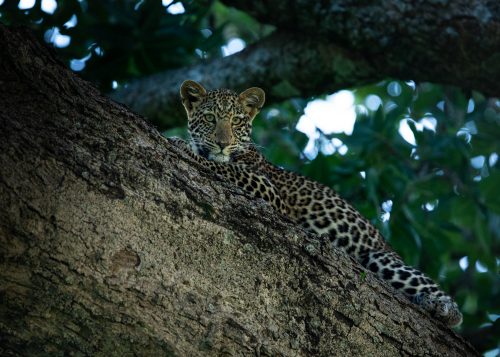
This weekly blog was established to document, and showcase, an average week in the Mara Triangle. Normally, I go out into the park with the same objective: capture 20 photographs across a broad spectrum of subjects, so as to do the entire week justice. I am always on the lookout for new stories and fresh ideas; original ways to capture arguably the most photographed landscape in the world.
Each week is different, and the amount of time I spend out in the grasslands varies too. The Mara ecosystem is so prolific that on average it takes me about two drives to get a healthy, and honest, account of the week. Of course I am but one person, often with my radio turned off, and so I miss a huge amount of the action, but I am never disappointed.
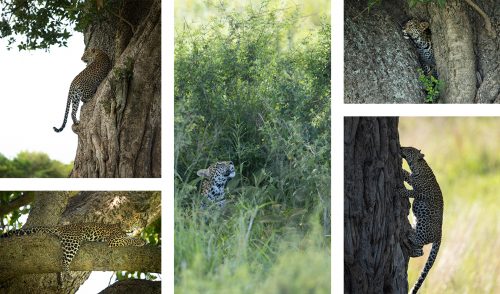
But once in a while there is a single sighting that is so incredible, so spectacular, and unusual that regardless of what else happened that week, it simply can’t compare. And this was one of those weeks.
It seems fitting that in my last post for the year, before I head home to South Africa to visit family over the festive season, I conclude 2020 with what was without a doubt my most memorable, and unusual sighting. I must have taken about 35 000 photographs in the Mara Triangle this year, covering all aspects of life, from the raging floods, to coalition take-overs, from macro shots of ants through to tractors rebuilding roads. And I thought I had seen it all…
Until I saw a female leopard hoist an ostrich.
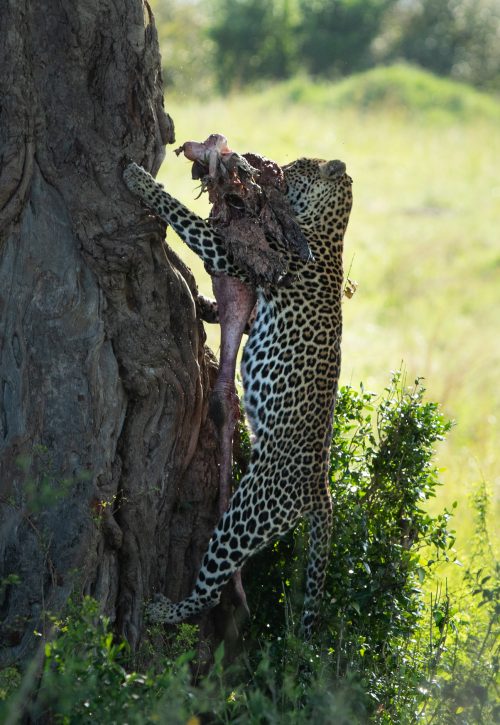
But first, let me rewind a bit. I decided to go out on a solo Sunday afternoon drive; it’s something I often do. I had heard reports of a leopard down in the south of the Triangle in an area known as ‘The Salt Lick’. I went out in the heat of the day knowing I was unlikely to see much, but hoping to find a sleeping cat and to sit with it until it woke.
Circling around the Salt Lick area I saw a hooded vulture take flight and I went to inspect what it had been feeding on. I was not expecting to find ostrich feathers scattered around a 10-metre radius. The black feathers gave away that it had been a male. I could see the intestines neatly discarded, but no body in sight. Feathers were everywhere – it must have been a terrific battle. The ankle-height grass and some dried mud allowed me to find a faint drag mark, giving an indication as to where the carcass had been moved. My initial assumption was that a lion must have been the cat behind the kill. I had heard a few reports of lions killing ostriches, but had never witnessed it myself.
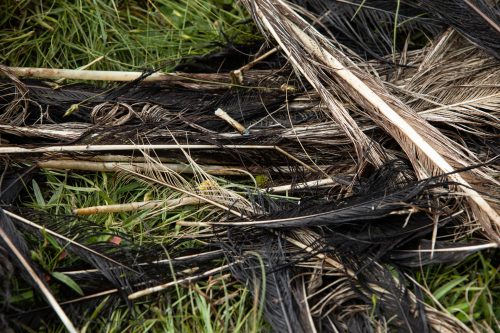
I drove towards the solitary fig tree and was surprised not to find a splayed out ostrich, let alone a fat and sleepy lion. Almost out of habit I looked up. There high up in the trees was a ball of mangled feathers. I looked closer. It was part of an ostrich, but certainly not the whole bird. It was hard to make it out but it looked like just a portion of a wing. How odd, I thought. I looked around and in the distance could hear a bubbling stream about 150 metres away. It was very bushy in that area around another, even larger fig tree. I decided to investigate. There was nothing up in the tree; no kill nor leopard. I drove away confused. What was the explanation? I decided to wait so I parked in some shade, pulled out a novel and read. From my position, I could see both trees. Weekends are tough in the Maasai Mara. Two hours later, I saw some movement at the base of the second fig tree. My heart leapt when through my binoculars I could see the outline of a leopard…a small leopard. Surely not an adult? The cub saw me and dived back into the long grass.
I waited… Patiently.
Then not so patiently.
About 45 minutes later, the cub came out again, giving me a chance to snap off a few still images. It was inspecting the trunk and the main branches of the tree above. I have witnessed enough leopard behaviour in my time to know that this is often a sign of a restless cub who wants to climb. I moved the car closer just in case. No more than 10 seconds later and she was up and climbing the trunk. My camera settings were completely off but fortunately her climbing technique was poor and I was able to rescue a few images. I was more prepared when the mother came out. But nothing could have prepared me for the fact that in her mouth was half an ostrich. Now, having lived the camp life for over a decade, I have seen plenty of genets clambering up trees with stolen chicken drumsticks out of the kitchen, but have you any idea how big and how long an ostrich leg is?
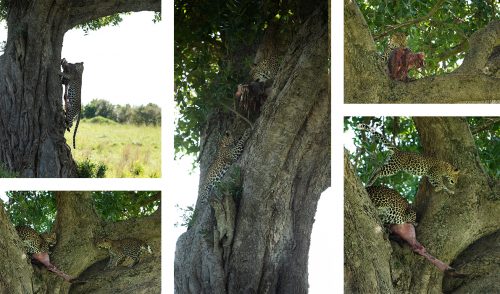
The power of this leopard was extraordinary. She rested halfway up the tree, whilst the cub tried to paw at the lifeless bird, before she lugged it even higher, and eventually out of sight. Sensing a greater confidence now in the two normally very skittish animals, I moved the car slowly closer… and closer… until I was about 25 metres away.
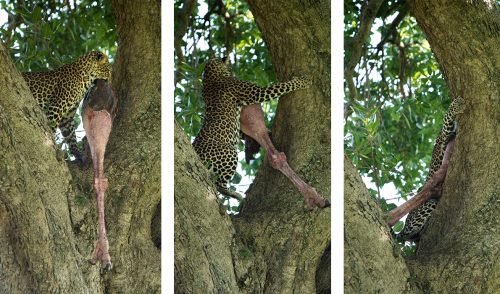
The inquisitive cub slowly started to grow bolder, moving along branches towards me. The mother slept. After an hour or so the cub was so bored of her sleeping mom that she proceeded to wake her up in the canopy, biting her ears and her tail. I had front row seats to the most incredible show.
Having studied the leopards in the Mara Triangle for the past three years, I knew who this female was, but I had never been able to get her to relax enough to get a good photograph of her, and certainly not to just watch and enjoy her. I had also driven through this area many times before and gazed across at this fig tree thinking to myself how amazing it would be to see a leopard in its branches.
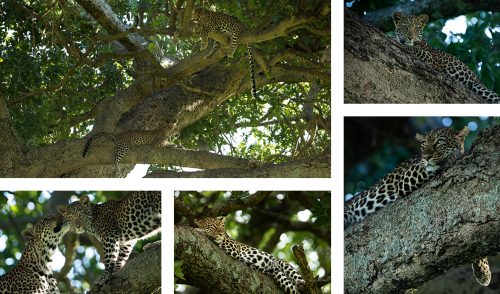
Well, I personally feel that this is the grand finale in what has been a truly unique year. One that will never be forgotten. I have reached out to a handful of big cat experts and scientists, and have not received any confirmed reports of a leopard having hoisted an ostrich before. And whilst that is of course one incredible aspect, the other is of course the fact that the carcass was seemingly split between two trees. It leaves me wondering if this was done on purpose by the leopard, intentionally hedging her bets, or if something else had happened moments before my arrival on the scene? I guess we will never know. And isn’t that one of the best things about the bush?
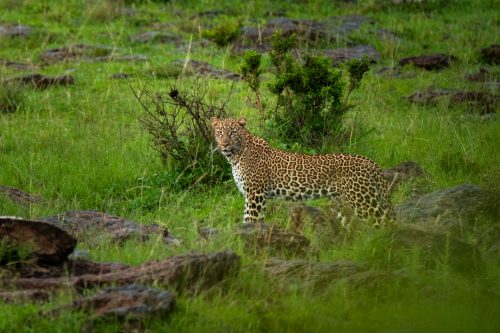
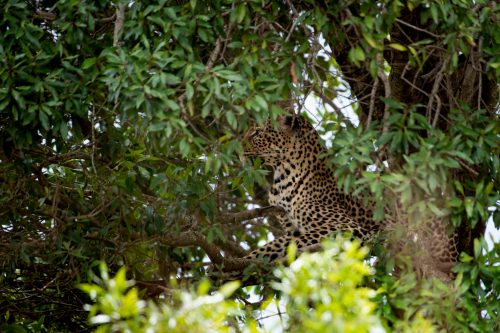
During this week, last year and the year before, I had been away from the Mara on leave. Remarkably the leopard sighting this week means we maintain a three-year winning streak of spotting this elusive cat at this time. Guess what we will be looking for during the second week of December 2021?
Filed under: This Week at Angama
Subscribe for Weekly Stories
Comments (2):
11 December 2020
Fantastic photos and article. Thanks!
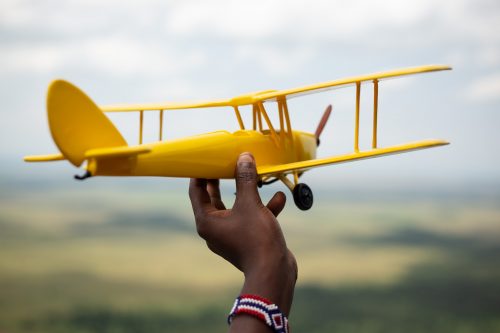
Out of Africa